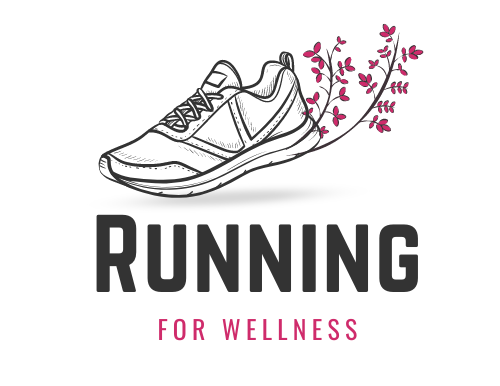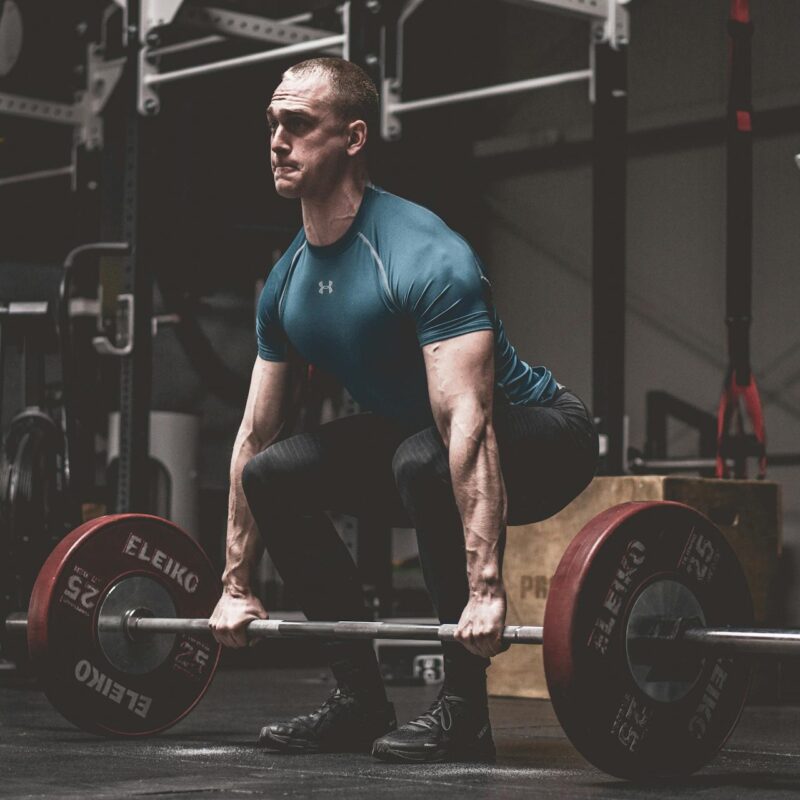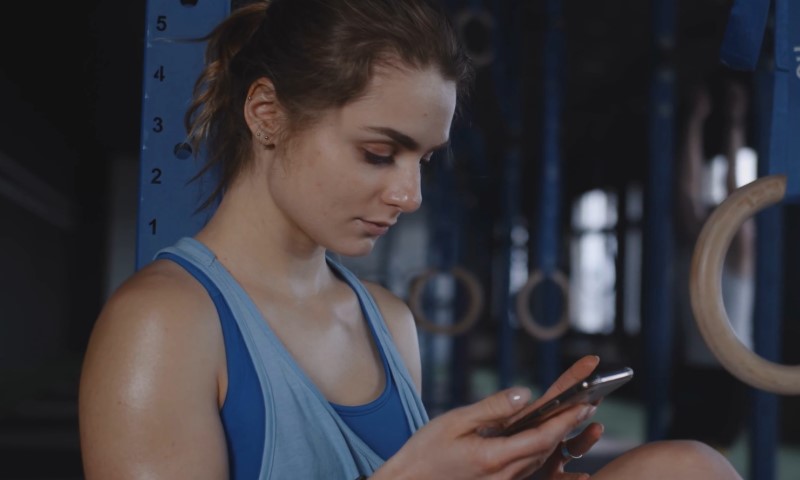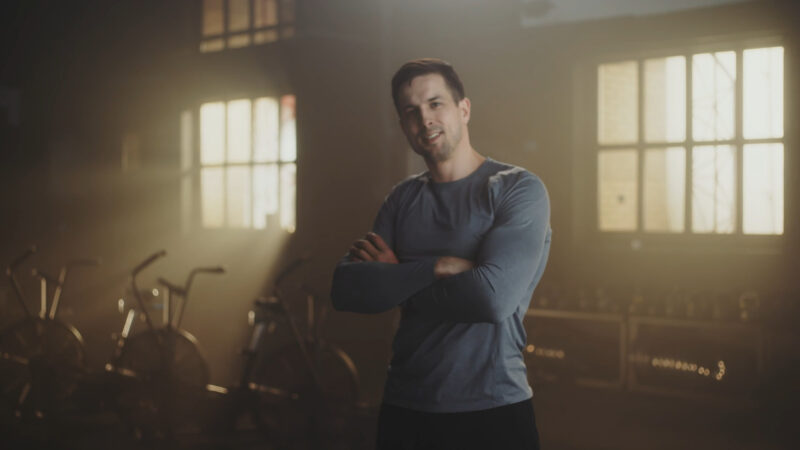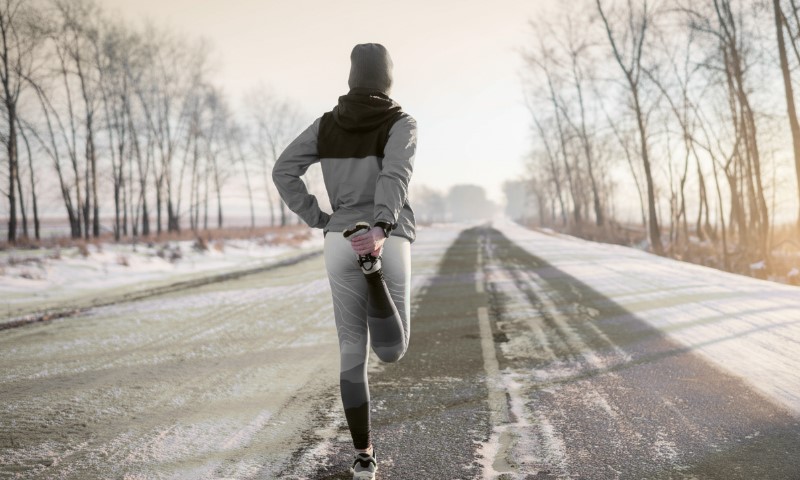Gyms offer numerous health benefits, including improved cardiovascular function, stronger muscles, and better mental clarity. They serve as essential spaces for physical transformation and motivation.
Despite these advantages, not all gym environments are as safe as they appear. Many contain hidden hazards that can compromise health and well-being.
The objective here is to shed light on these dangers and offer practical strategies to help navigate gym spaces with greater safety and awareness.
Table of Contents
ToggleDirty Truth: Hygiene Hazards in the Gym
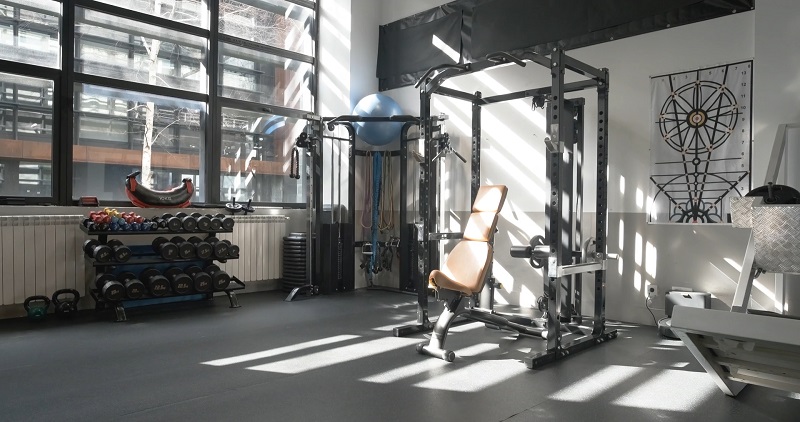
Gyms are meant to promote physical wellness, but many conceal hygiene issues that can compromise health. High traffic, shared equipment, and closed environments make fitness centers vulnerable to microbial buildup.
Hygiene hazards often go unnoticed until someone gets sick or develops a skin condition. To stay safe, gym-goers need to know where threats lurk and how to minimize exposure.
In some cases, long-term exposure to chemical agents, such as firefighting foam used in military or industrial settings, has led to health-related lawsuits, such as the AFFF Lawsuit Navy, raising broader questions about environmental safety in shared public and training environments.
Key problem areas include germ hotspots, poor staff sanitation practices, and damp locker room environments.
Germ Hotspots
Dumbbells, treadmills, yoga mats, and locker benches frequently become breeding grounds for harmful bacteria. These surfaces are handled by dozens, if not hundreds, of people every day and are rarely cleaned between uses.
Sweat, skin oils, and shared contact points accelerate germ transmission. Equipment that looks clean might still carry pathogens that can trigger skin infections or more serious illnesses.
Key risks include:
- MRSA and E. coli exposure on uncleaned surfaces
- Respiratory irritants lingering on mats and padding
- Cross-contamination through shared items without barrier protection
Bringing a personal towel, wiping down machines before and after use, and wearing gloves during lifting sessions can help reduce direct contact with contaminants. Still, consistent cleanliness largely depends on management protocols.
Inadequate Staff Hygiene Practices
Facility staff are often responsible for disinfecting shared spaces and refilling sanitation supplies, yet many gyms cut corners.
A lack of regular cleaning or failure to provide adequate disinfectant spray leaves members exposed to unnecessary risk.
Without strict hygiene enforcement, even well-meaning gym-goers cannot compensate for systemic neglect.
Red flags to watch for:
- Empty sanitizer bottles or stations
- Unclean locker areas or mirrors with smudges and grime
- Visible dust buildup on less-used machines
Clear schedules for cleaning, posted sanitation policies, and a staff presence during peak hours signal a commitment to hygiene. In contrast, poor maintenance reveals a disregard for member safety.
Locker Rooms and Saunas
Locker rooms, steam areas, and saunas create ideal conditions for mold and fungal growth. Moist air, warm temperatures, and porous surfaces turn these spaces into hidden health threats.
Athlete’s foot and ringworm are common in such areas, often transmitted by walking barefoot or placing bare skin directly on benches.
Common dangers include:
- Fungal infections due to shared, moist floors
- Mold inhalation in poorly ventilated saunas
- Skin irritation after contact with damp surfaces
To reduce risks, members should wear shower shoes, bring clean towels, and avoid lingering in damp areas.
Management should install fans, monitor humidity levels, and clean these areas multiple times daily.
Physical Safety Risks
Gym environments often present more hazards than most people expect. While focus remains on building strength and endurance, physical safety risks often go unnoticed until injury occurs.
Floors cluttered with equipment, unmaintained machines, and layout flaws create a breeding ground for accidents. To address these concerns, it’s essential to examine key areas where injuries commonly originate.
Slip and Trip Hazards
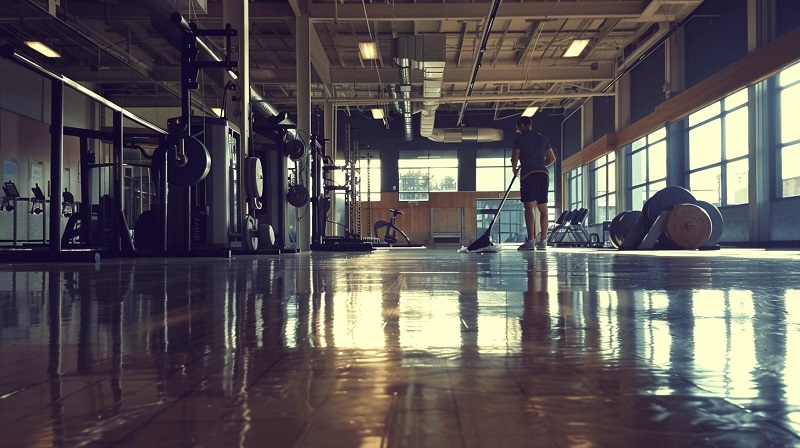
Sweat puddles and stray water bottles are more than inconveniences, they’re safety hazards. Gym floors quickly become slippery, especially during peak hours.
When combined with cluttered layouts and poor maintenance, injuries are nearly guaranteed.
Common causes of slips and trips include:
- Sweat or water accumulation on smooth flooring
- Weights left on the ground instead of proper racks
- Unattended gym bags or bottles blocking walkways
- Uneven or torn flooring, especially in older gyms
- Dim lighting in transitional areas like stairwells or corners
Prevention starts with awareness. Wearing proper footwear with grip-enhancing soles helps maintain balance.
Observing surroundings before starting a set or changing locations can also reduce the likelihood of stepping into a hazard zone.
Gym owners should invest in:
- Clearly visible “Wet Floor” signs
- Non-slip flooring materials in high-use areas
- Regular janitorial inspections throughout the day
- Organized layouts with designated equipment zones
Members should feel empowered to report hazards. Front desk personnel should be trained to log these complaints and act promptly.
Malfunctioning Equipment
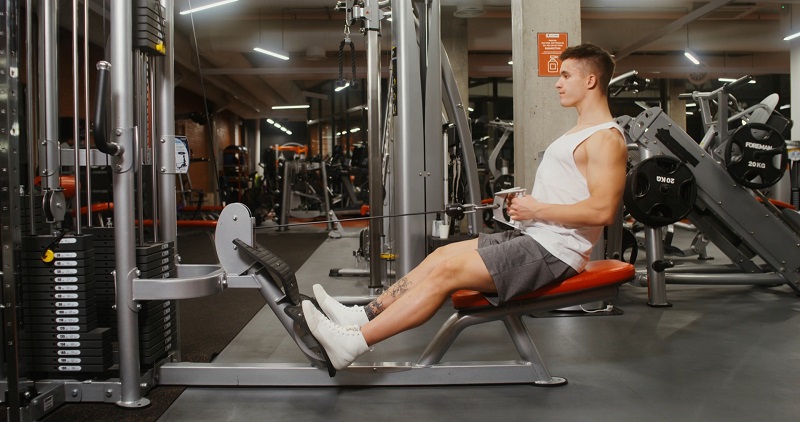
Machines may appear sturdy but hide critical internal issues. Worn cables or degraded rubber padding might not draw attention, yet they carry the potential for catastrophic failure.
One misplaced pull or sudden collapse can leave users with torn muscles, dislocated joints, or worse.
Common signs of malfunction include:
- Frayed or visibly split cables on cable-based machines
- Cracked seat padding that shifts during use
- Loose bolts or wobbling frames
- Non-responsive digital displays on treadmills or ellipticals
- Grinding or jerking movements in resistance machines
Quick pre-use inspections can uncover most of these warning signs. Pulling gently on cables, testing seat stability, and examining bolts for looseness are simple but crucial habits.
Reporting broken or suspicious equipment helps protect everyone in the facility. Management should provide an easy method to do so, such as a clipboard, QR code, or app-based form.
Injuries caused by sudden equipment failure, such as jerking cable machines or collapsing benches, often require evaluation by a whiplash doctor or spine specialist, especially when neck strain is involved.
Management should provide an easy method to do so, such as a clipboard, QR code, or app-based form.
Human Factor Risks
Gyms are only as safe as the habits and decisions of the people using them. Even with top-of-the-line equipment and regular maintenance, human error often becomes the leading cause of injury.
Faulty form, excessive effort, and lack of supervision during heavy lifts frequently result in preventable harm.
Individuals unaware of proper training methods, or those driven by ego rather than discipline, face greater exposure to risk.
Poor Exercise Technique
Incorrect form during workouts remains one of the most common causes of gym injuries.
A seemingly harmless squat or bench press, if performed without proper mechanics, can stress joints, tear muscles, or misalign the spine.
Without coaching, many people repeat flawed movements that cause cumulative damage over time.
Personal trainers play a vital role in reducing these risks.
Video analysis also proves useful for self-assessment, offering a visual way to identify and correct flaws.
Key Considerations:
- Muscle memory forms fast; bad form becomes difficult to fix if left unchecked.
- Exercises involving the back, knees, and shoulders demand extra attention to detail.
- Self-recording your lifts provides instant feedback and helps track progress or problems.
- One-on-one coaching can prevent years of poor technique and chronic injury.
Overexertion and Ignoring Pain
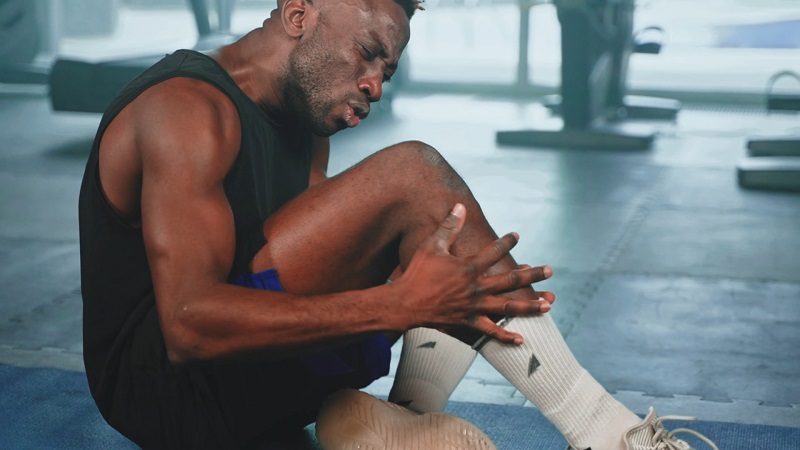
More weight doesn’t always equal better results. Many gym-goers push their bodies past safe limits, ignoring warning signs like:
- Sharp pain
- Dizziness
- Fatigue
Overexertion can lead to severe outcomes such as rhabdomyolysis, herniated discs, or torn ligaments.
Pain should never be treated as a badge of honor. Each workout should include structured warm-ups, adequate hydration, and planned rest.
Intensity must be earned through progression, not impulse.
Tips to Avoid Overtraining:
- Prioritize recovery days in every weekly routine.
- Use a training log to monitor performance and spot signs of decline.
- Learn the difference between soreness and injury.
- Adjust workouts based on sleep quality, nutrition, and stress levels.
Lack of Spotters
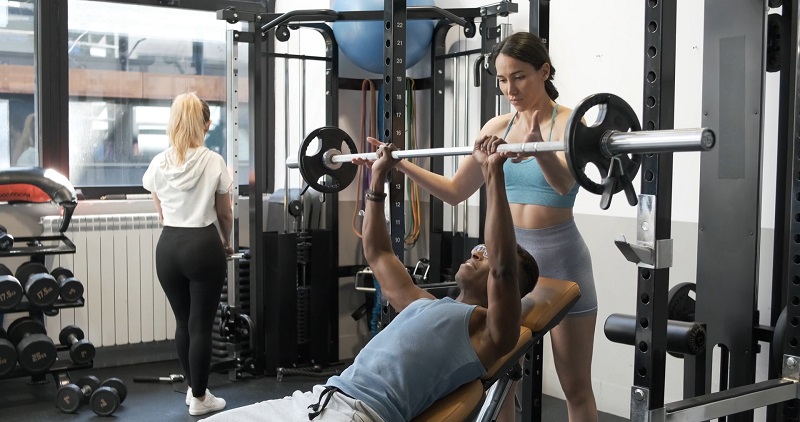
Heavy lifting requires more than confidence, it demands preparation. Attempting maximal lifts without a spotter drastically increases the chance of crushing injuries, especially during bench press or squats.
In moments of failure, having someone nearby can be the difference between a scare and a hospital visit.
Spotters offer more than just emergency assistance. They help with proper lift-off, encourage correct breathing patterns, and motivate consistent effort.
Even experienced lifters benefit from having an extra set of eyes on their form.
Why Spotters Matter:
- Act as a safety net during compound lifts.
- Help prevent panic under heavy weight.
- Can correct form in real-time.
- Encourage discipline and accountability in lifting routines.
Final Thoughts
Gyms should be spaces of health, not harm. Yet, hygiene issues, faulty equipment, human error, and poor maintenance often create preventable hazards.
Awareness and proactive action can significantly reduce these risks. Clean facilities, attentive staff, informed users, and regular maintenance all contribute to safer workouts.
Choosing a facility that prioritizes cleanliness, functionality, and member safety is key to reaching fitness goals without putting well-being in jeopardy.
Related Posts:
- Top 400 Hilarious Gym Quotes to Keep You Motivated
- 25 Simple Running Motivation Tips To Get You Moving
- How Can You Start a Career as a Running Coach?
- How Long Does It Take to Train for a Half Marathon?
- Lower Back Pain While Running? Here's What You Need to Know
- How Far Is a Half Marathon? Everything You Need to Know
